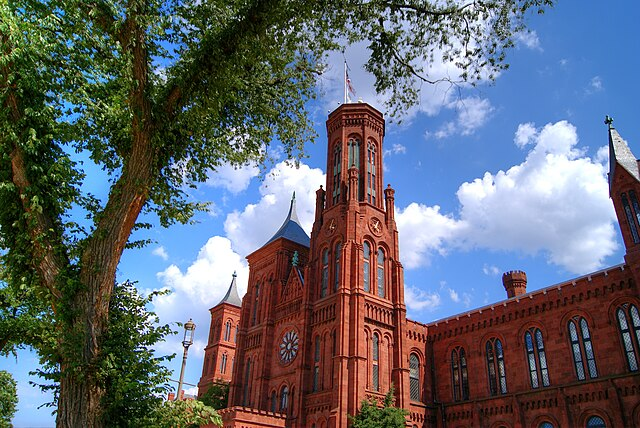Two Georgetown University history professors are leading a group of volunteers to archive exhibits across the Smithsonian Institution in anticipation of federal directives that could alter or remove museum content.

The organization, Citizen Historians for the Smithsonian, was founded by Georgetown professors Chandra Manning and James Millward after the White House sent an Aug. 12 letter to Smithsonian Secretary Lonnie Bunch instructing museums to replace what it described as divisive content. As of Oct. 6, the initiative has documented 81% of content in the Smithsonian museums with over 40,000 photographs in the system, according to the latest internal statistics from the organization’s technical lead Jessica Dickinson Goodman (GRD ’26).
Manning said she and Millward saw the project as a way to involve the public in their mission to protect the Smithsonian’s historical record.
“There are professionals in the Smithsonian who have dedicated their lives to that place,” Manning told The Hoya. “We’re not going to be able to replicate that. But we’re outside the Smithsonian. Our jobs aren’t somehow on the line or endangered because of this plan to review the Smithsonians, so we felt like we were in a position to be able to do something, and we knew that people cared. We knew people are dying to have something to do as a way of registering their concerns.”
Millward said the project began after the two professors were alarmed by the White House letter’s implications.
“This letter made demands that the Smithsonian provide digital files for all of the texts and scripts and plaques and didactics on the wall and a lot of other information like that,” Millward told The Hoya. “This was framed as trying to put the Smithsonian in compliance with the president’s program.”
“It seemed clear that this was aimed at an effort to censor and rewrite the exhibits at the Smithsonian, about history, about our art, about our culture, about who the American people are,” Millward added.
According to the letter, the Trump administration is reviewing exhibits dedicated to history, ethnicity, art and science. However, the letter did not specify which museums may be reviewed in the second phase of the initiative, though the administration did not elaborateon what that phase would entail.
Under a March executive order, some national parks have already removed signs about slavery and climate change.
Manning said the organization grew quickly following their initial call to action.
“We put out a call, just through emails and neighborhood listservs, to say, ‘Hey, anyone want to help us take pictures of the Smithsonian?’” Manning said. “The response was truly overwhelming. Luckily, one of the people to respond was a graduate student at Georgetown, Jessica Dickinson Goodman, who actually had skills that Jim and I do not.”
Dickinson Goodman said the group’s timeline has tightened as the Smithsonian faces potential closure by Oct. 12 amid the current government shutdown.
“In the world of consequences of the shutdown, this is an extremely minor one,” Dickinson Goodman said. “But, for our project, it obviously means that we have said a number of, ‘You have to go today, it might be closed tomorrow,’ emails. It isn’t ideal, but so far, volunteers have really understood that the chaos and the urgency is not coming from inside the project.”
Rosie Click (GRD ’27), a doctoral candidate at Georgetown and co-captain for the project’s National Portrait Gallery team, said the project facilitates civic engagement during a politically uncertain time.
“This is a really positive example of public participation in history and preserving history and preserving our institutions and the knowledge that has been generated,” Click told The Hoya. “And I think that in a time when a lot of people are losing hope for a variety of very legitimate reasons, this is one thing that can give people some hope.”
Sophia Nimlo (GRD ’28), a doctoral candidate and team captain for the National Zoo, said her team thought creatively about what exhibits the federal government may target.
“Anything about evolution or things that might be questionable for religious reasons are things that we worry might be targeted,” Nimlo told The Hoya. “There’s obviously a lot of denial of climate change. The other thing is the pandas are actually something that could be a great concern because of the issue of panda diplomacy.”
“We also are documenting things that go beyond just the exhibits themselves, so any other kind of signs, like non-gendered bathrooms,” Nimlo added. “Even lactation rooms, if there’s attacks on women’s rights, could be something that could be politicized.”
Click said the project is ultimately about preserving public access to shared history in an American institution.
“The thing with the Smithsonian is that that is the history that belongs to all Americans, whether the topic is about them or not,” Click said. “These are public institutions. Their purpose is to serve the American public. The historical work and documentation has been paid for by American taxpayer dollars. The American public has the right to access that information.”